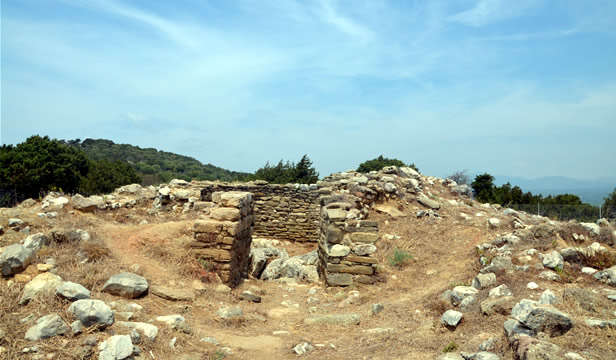
This vaulted tomb dated back to the Mycenaean Era (1680-1060 B.C) had already been traced in the late 19th century by the English historian, G.B. Grundy, but the first systematic excavation was carried out in 1950 by Professor Sp. Marinatos. The excavator considered it to be the burial monument of Thrasymedes, son of mythical king Nestor, as mentioned by Pausanias in his texts. The tomb was partially plundered, but the remaining votive gifts allow us to imagine its wealth: a multitude of stone arrows, two necklaces of amethyst and sard, four gold sheetings, two small Mycenaean clay vessels and other small objects.
The skeleton of an ox that was found intact and probably came from a sacrifice in honour of the dead, was another impressive finding. Newer research (1977-1979) carried out by Professor G. Korres proved that the vaulted tomb was established on a burial mound of the Middle Helladic Era (2050-1680 B.C.). Traces of an early Helladic settlement (2650-2200 B.C.) has also been confirmed in this area based on the archaeological finds. The multitude of terracotta tablets and figurines of the 4th – 3rd century B.C., found around the vaulted tomb, bear testimony to the worship of ancestors for a well-known hero, and they are possibly related to a small structure that lies nearby, probably an Hellenistic altar, that was interpreted as being a heróon (the hero’s tomb/memorial).
